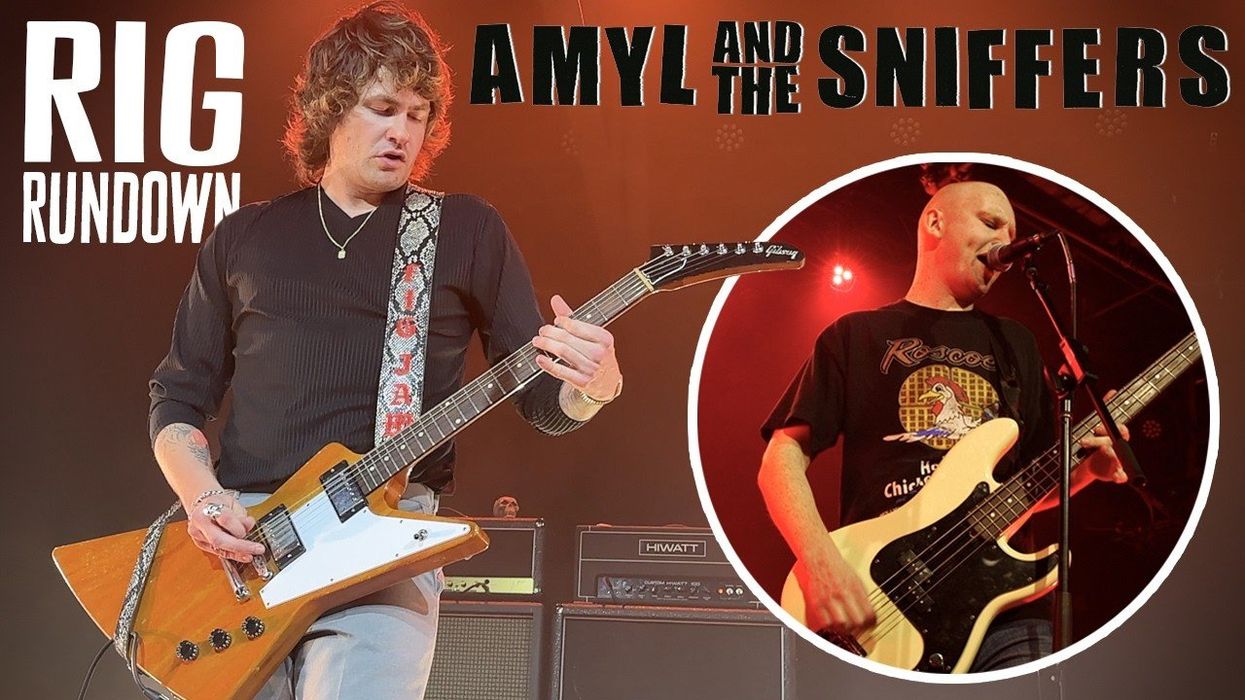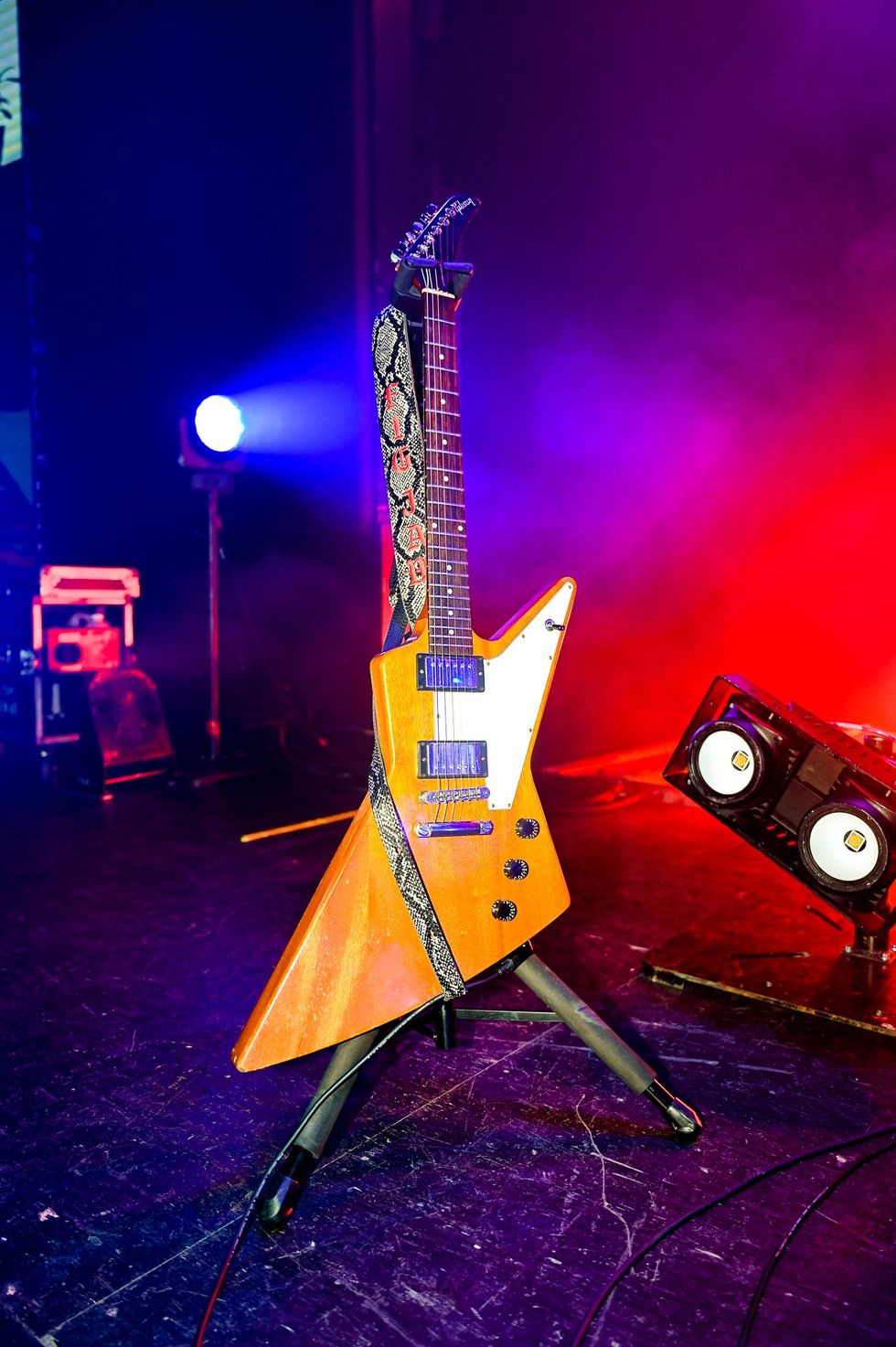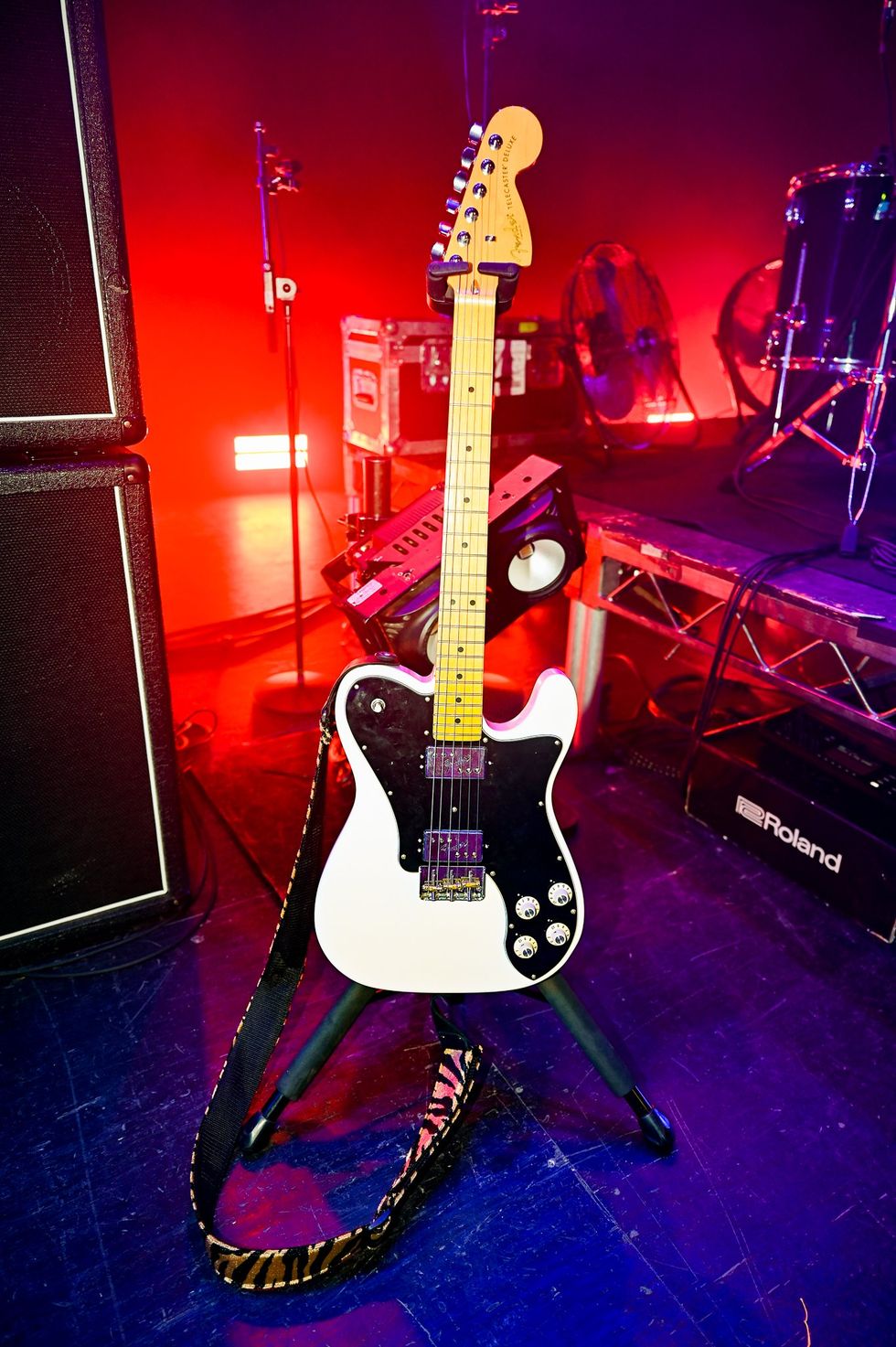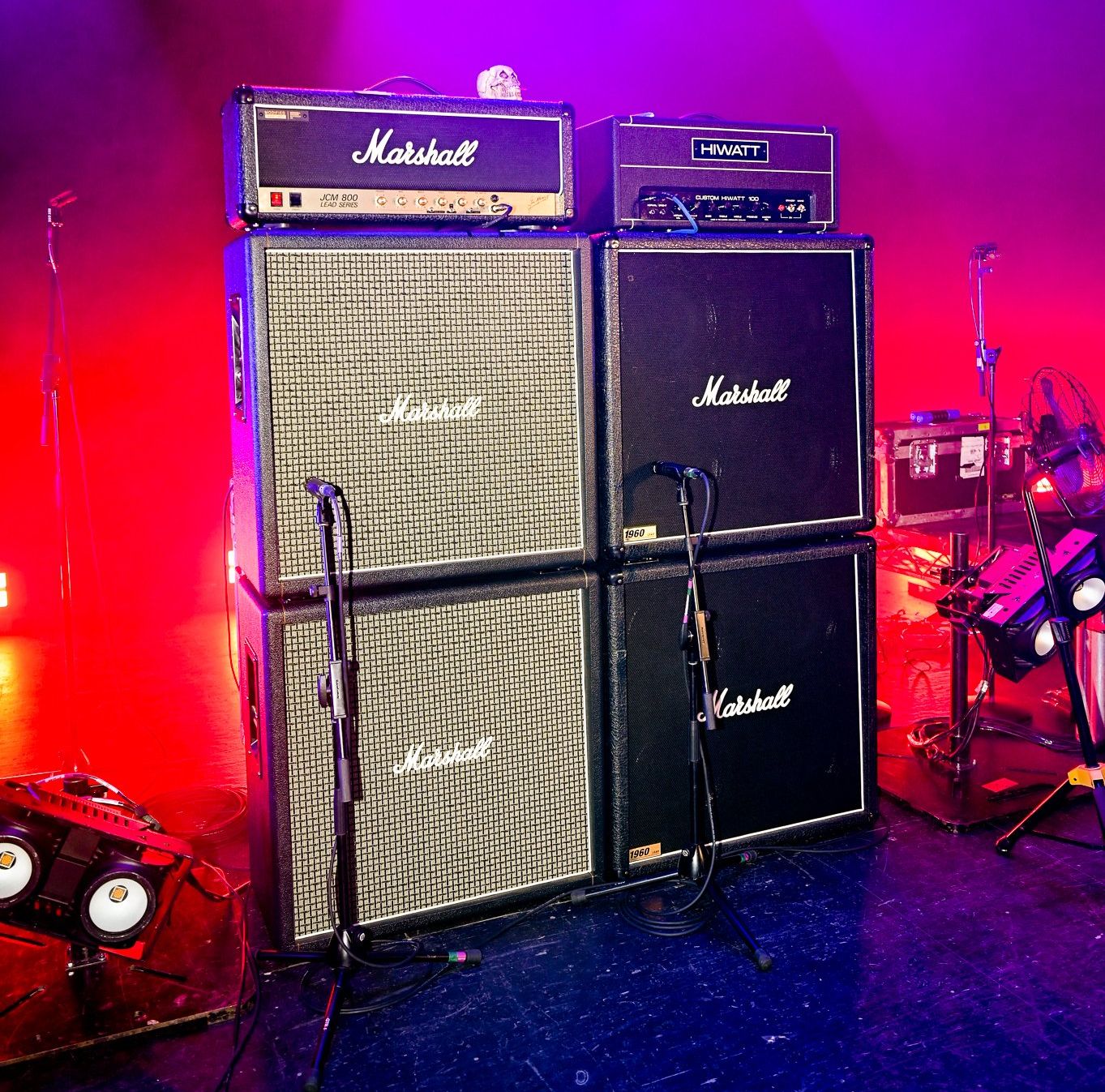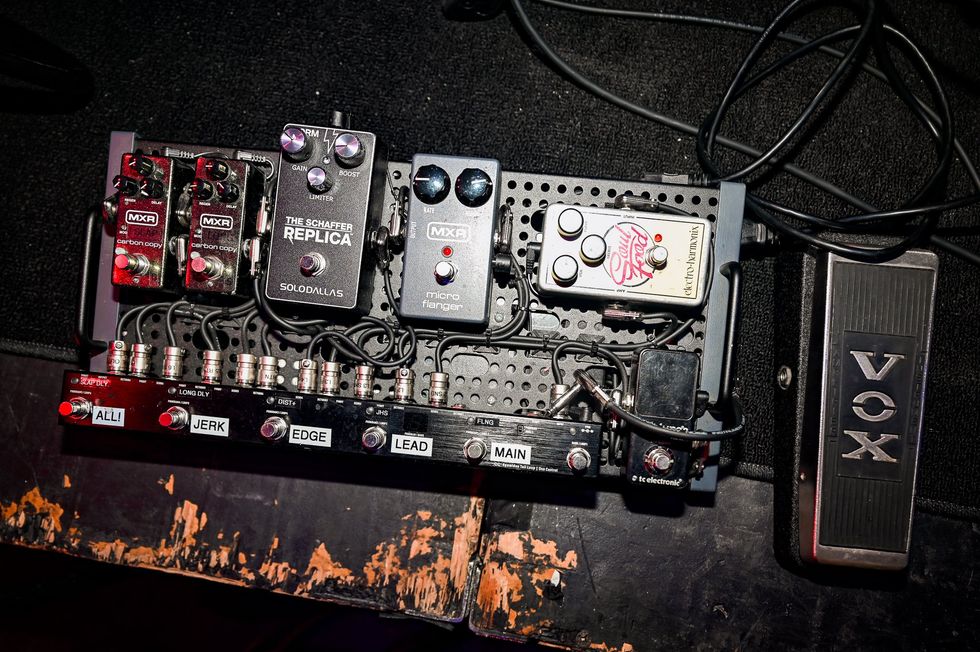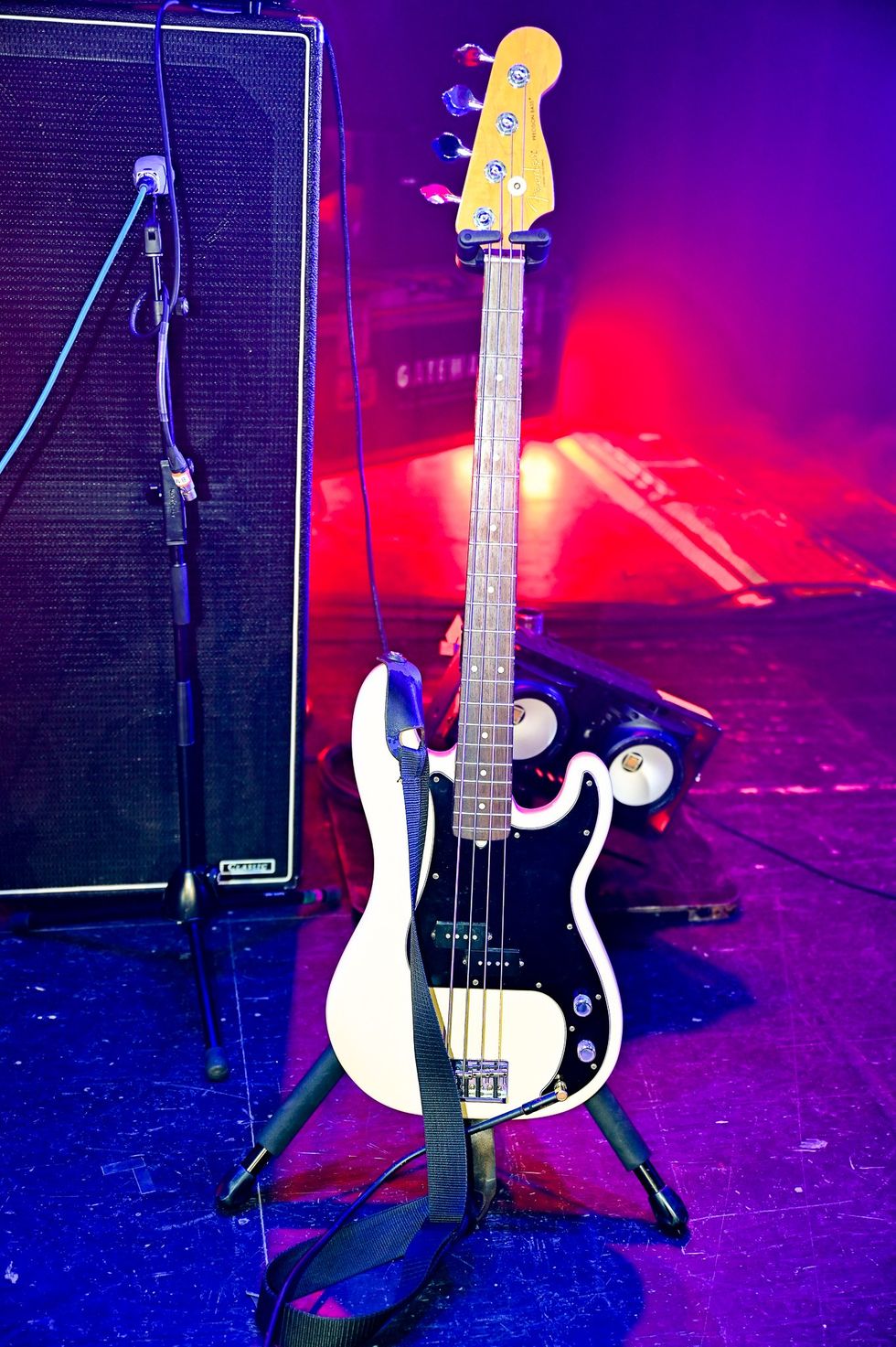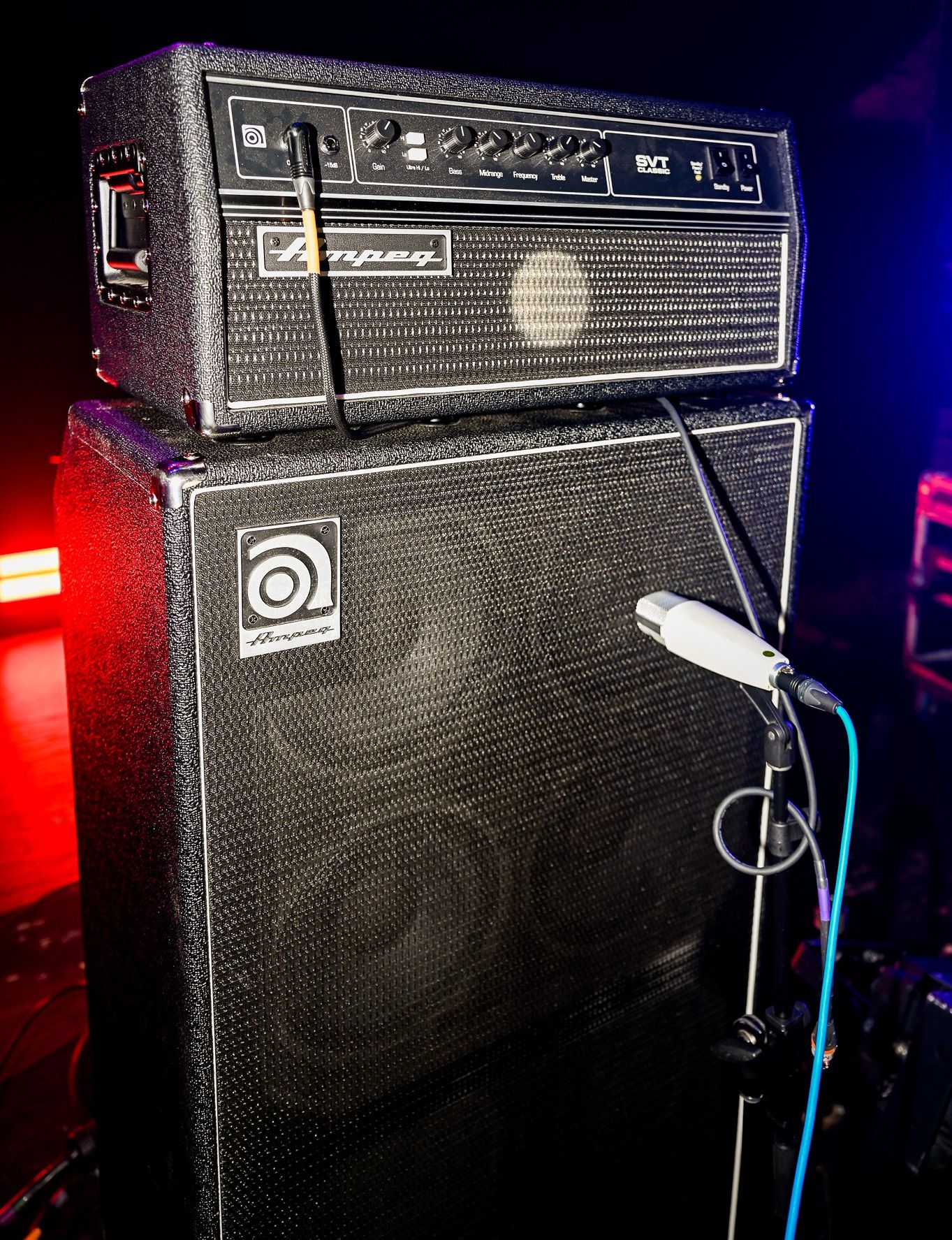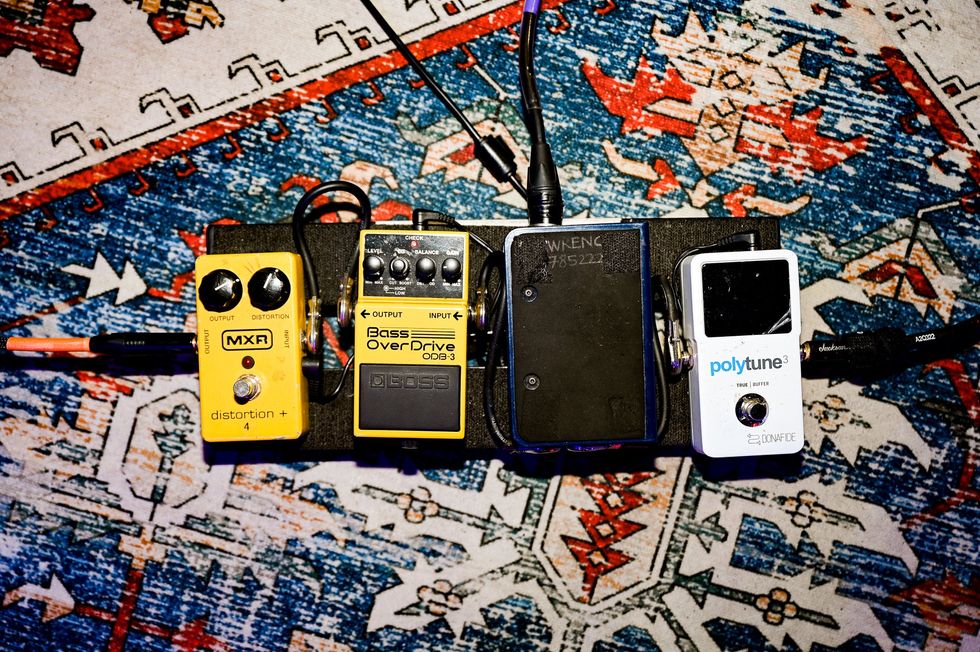Playing the 16-watt, EL84-driven Carr Bel-Ray is, at times, flat-out, ecstatic fun. It’s alive, reactive, responsive, dynamic, and barks and chimes with a voice that spans a siren’s song and a firecracker. It lends snap and top-end energy to humbuckers, can turn a Telecaster bridge pickup lethal, or make a Rickenbacker 12-string brash and beautiful at once. It can also make you forget stompboxes exist. Most of my time with the Bel-Ray was spent without a pedal in sight.
Carr Bel-Ray Amp Demo | First Look
As the EL84 power section suggests, the Bel-Ray offers many paths to British amp tonalities. Three different voices—V66, H73, and M68, accessed via a 3-way switch—approximate Vox, Hiwatt, and Marshall sounds, respectively, and each genuinely, sometimes uncannily, evokes its inspiration. The three voices are only jumping-off points, though. The superb onboard attenuator enables huge sounds at civilized volumes, and the creative preamp section and volume-taper toggle can recast each voice profoundly. So can the flexible EQ, which shifts and morphs the Bel-Ray’s many tone colors in elegant and painterly ways. The tremolo, by the way, is rich, thick, and luxurious.
The Bel-Ray’s delectable tone-tasting menu is high-end stuff. Prices start at $3,240 for the combo and $3,150 for the head. But the Bel-Ray’s bold palette is unusually expansive, which can make a lot of amps very redundant. Compact, handsome, lovingly crafted, multifaceted, and way louder than its dimensions suggest—the longer you delve into the Bel-Ray’s potential the more the price tag makes sense.
Immaculately Executed
The Bel-Ray isn’t expensive for its hip sounds alone. We’ve raved about Carr quality before in Premier Guitar, and the Bel-Ray suggests Steve Carr’s standards are as high as ever. I’ve seen pricey custom furniture put together much less exactingly. And the substantial amp chassis and the circuit, handwired on terminal strip, almost suggest a kind of virtuous overbuilding—the variety that makes old Volvo and Mercedes-Benz engines go a half-million miles.
The Bel-Ray’s tube complement is nearly identical to those found in 18-watt Marshalls, AC15s, and Watkins Dominators, which are the Bel-Ray’s most obvious design touchstones. But rather than use three 12AX7 preamp tubes like those circuits, the Bel-Ray trades one 12AX7 for a pentode EF86. It adds a lot of pop and kinetic energy to the basic voice. It also works with a partial master volume, situated just after it, to lighten the load on the power tubes when you use the amp in the volume-taper toggle’s less-aggressive low position. An EZ81-based tube rectifier adds a welcome touch of contour to the Bel-Ray’s often hot and toppy response and widens the amp’s touch responsiveness spectrum. The Fane F25 12" ceramic speaker also helps broadcast the Bel-Ray’s fiery side while smoothing the toppiest peaks. Carr’s excellent attenuator enables operation between zero and 2 watts, or you can use the wide-open 16-watt mode. In both modes, and at virtually any setting, the Bel-Ray dazzles with its power, many personalities, and electric presence.
Warning! Explosives on Board
If you’re accustomed to vintage Fender, Gibson, Ampeg, and other American amps in this low-mid-wattage power category, you might be startled at how loud and feral the Bel-Ray can be. At 16 watts, it sounds and feels as loud and feisty as some 30- and 50-watt combos. At 2 watts it sounds just as full bodied and full of fangs, just quieter. Only when you spin the attenuator to the noon position (presumably about 1 watt) does the amp start to sound considerably thinner.
“There aren’t many guitars the Bel-Ray won’t love or illuminate in the most flattering light.”
Each setting on the voice switch, which affects the EQ section only, effectively reroutes the tone stack through three completely different sets of circuit values, shifting frequency emphasis and pass-through gain. The individual voices vary in gain (the Vox-y V68 is lowest, the Marshall-y M66 is highest) and can sound completely distinctive with many, many tone shades between them. As a result, there aren’t many guitars the Bel-Ray won’t love or illuminate in the most flattering light. PAF humbuckers, and their thick overtone profile, predictably blur some differences between the voices, but also generate dynamite, white-hot, and throaty tones and push the Carr to bellowing volumes that sound nothing like 16 watts. Good humbuckers are also a great vehicle for exploring the Bel-Ray’s superb dynamism and touch sensitivity. I rarely used a pick with my SG and the Bel-Ray, because I could coax such clear-and-sweet-to-searing extremes via touch dynamics and my guitar’s volume knob alone.
Telecasters, which are a particularly tasty match for the Bel-Ray, come alive with the same dynamism, sensitivity, responsiveness to volume and tone attenuation techniques, and varied touch intensity—enabling travel between dew-drop-delicate bell tones and screaming, edgy Jimmy Page daggers. A Rickenbacker 12-string with toaster tops was among the most revelatory pairings. With a little extra midrange kick, overtones danced in kaleidoscopic light. Turn up the gain, though, and the Rick will roar.
While the Bel-Ray could happily live its long life without ever meeting a pedal, it sounds fantastic with them. There is plenty of air in the Bel-Ray’s many voices to accommodate and communicate overtone intricacies in reverbs and complex modulation effects. And fuzz paired with the Bel Ray is a psychotically hot combination that cannot be missed.
The Verdict
The Bel-Ray is an impressive and handsome piece of kit. It’s also a reminder that an amplifier is arguably the most important piece of your signal chain. Everything sounds awesome through this amp. Technical pickers will love its sharp precision, but it overflows with slashing punk energy and dynamism, has enough headroom to communicate the details of alternate tunings and odd effects, and sounds spectral, full, and fantastic at both ends of its impressive volume range. About the only thing you won’t get from the Bel-Ray is a wide range of blonde and black-panel Fender sounds, though you can get really close, if extra-zingy, approximations in a pinch.
The price is hefty. But depending on your music and the settings and spaces you create it in, the Bel-Ray opens up many more possibilities than any AC15 or 18-watt Marshall would offer on its own. Also, the sense of craft in this amp offers its own kind of enjoyment. It’s a thoughtful, clever, beautifully built thing to behold. It’s also fun. Fun enough to make you fall asleep at night smiling and giddy, grateful that electrified, amplified music exists.











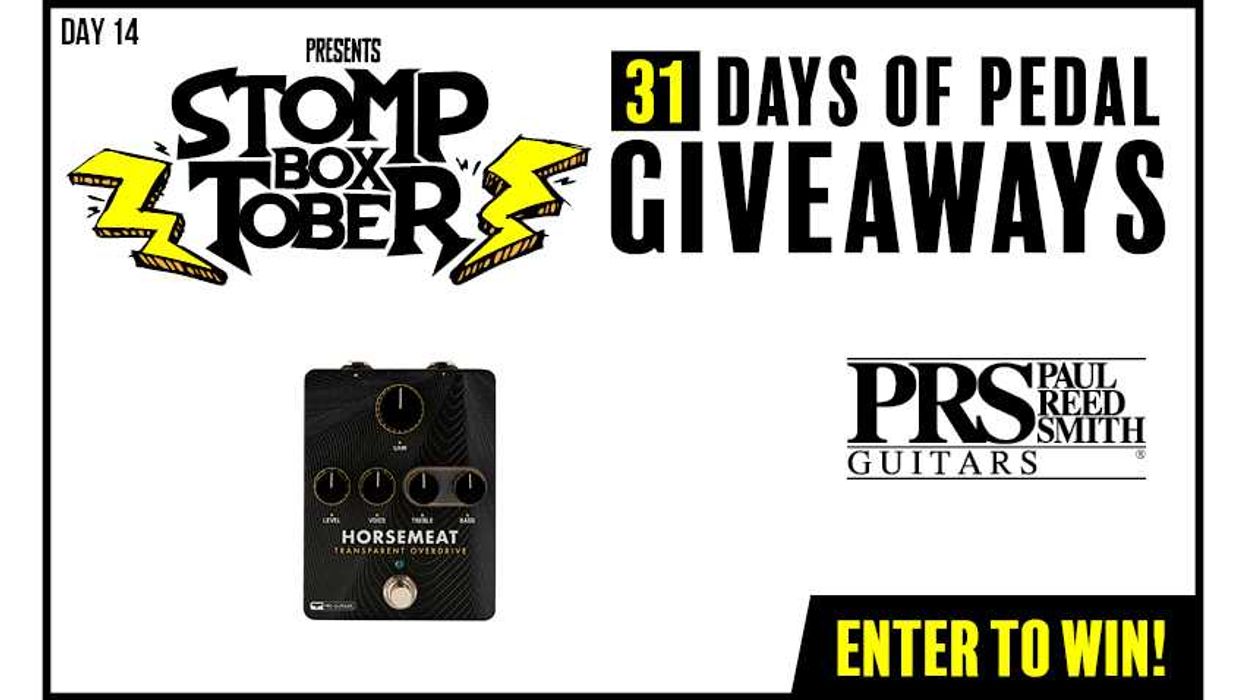
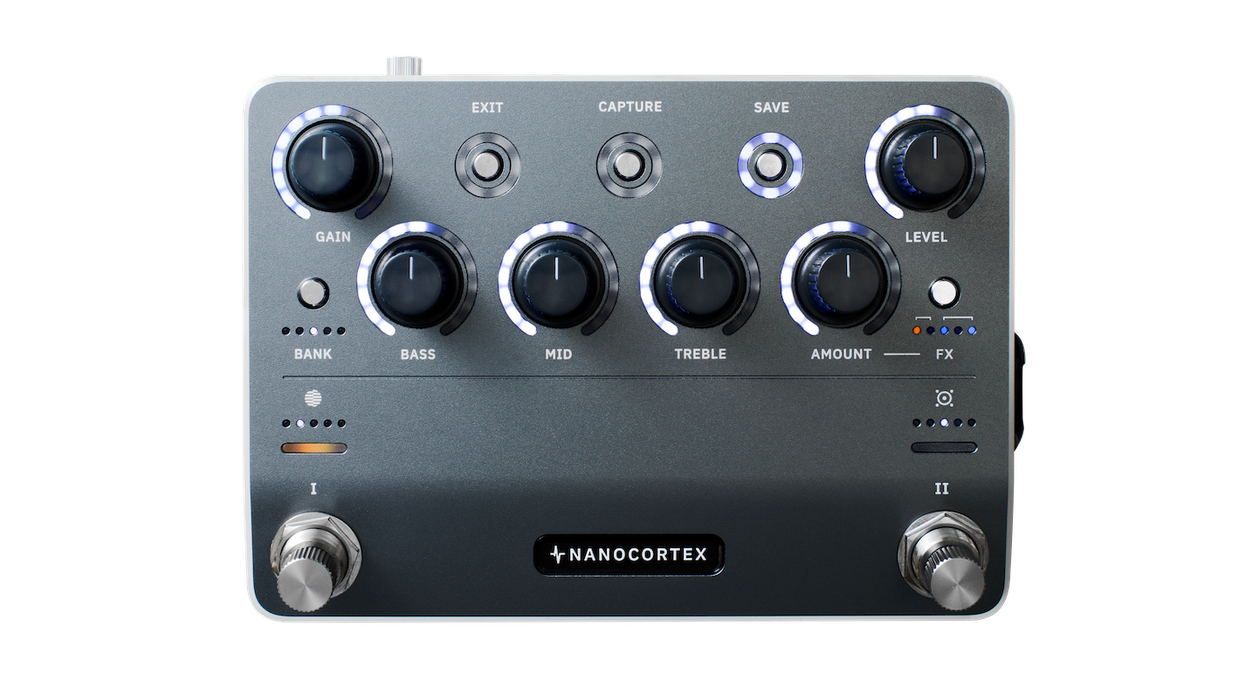
![Devon Eisenbarger [Katy Perry] Rig Rundown](https://www.premierguitar.com/media-library/youtube.jpg?id=61774583&width=1245&height=700&quality=70&coordinates=0%2C0%2C0%2C0)














